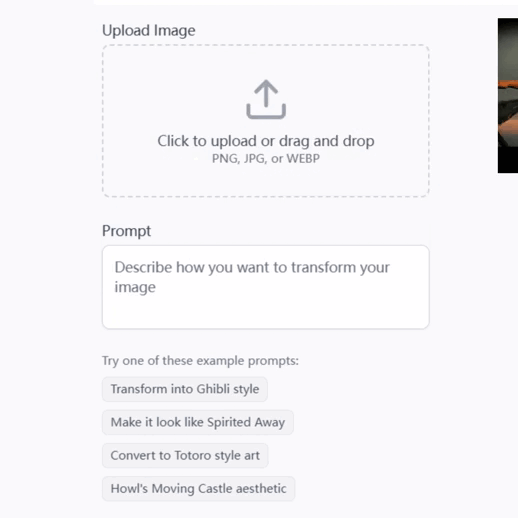
Legal Futures Thinking - Legal Scenario Exploration

Welcome to Legal Futures Thinking, where we explore the future of law.
Envisioning the Future of Law with AI
Imagine a future where legal technology...
Explore how AI can transform the practice of law by...
Consider the impact of automation on legal professionals...
Discuss the potential ethical challenges of AI in legal contexts...
Get Embed Code
Legal Futures Thinking: An Overview
Legal Futures Thinking is a forward-looking approach designed to explore, anticipate, and shape the future of the legal sector. It integrates futures thinking methodologies with legal analysis to envision possible, plausible, and preferable futures for law and justice systems. By employing techniques such as scenario planning, trend analysis, and strategic foresight, Legal Futures Thinking aims to prepare legal professionals, policymakers, and educators for emerging challenges and opportunities. For example, it might explore the impact of artificial intelligence on legal practice, envisage new regulatory frameworks for digital currencies, or anticipate changes in global trade laws due to geopolitical shifts. Powered by ChatGPT-4o。

Core Functions and Applications
Scenario Planning
Example
Developing future scenarios for privacy law in the digital age
Scenario
Legal Futures Thinking uses scenario planning to help firms and policymakers envision different futures where privacy laws must adapt to technological advancements, such as widespread use of IoT devices or quantum computing. This function aids in creating robust legal frameworks that can accommodate various technological futures.
Trend Analysis
Example
Analyzing trends in remote work and their legal implications
Scenario
By examining the acceleration of remote work, Legal Futures Thinking identifies potential legal challenges and opportunities, such as changes in employment law, cybersecurity risks, and jurisdictional complexities. This analysis helps organizations to proactively adjust their policies and practices.
Strategic Foresight
Example
Anticipating the legal needs of emerging industries
Scenario
Using strategic foresight, Legal Futures Thinking assists in predicting the development of new industries, such as space tourism or synthetic biology, and the legal challenges they might face. This enables lawmakers, firms, and educational institutions to prepare more effectively for the future, ensuring legal systems remain relevant and supportive of innovation.
Target User Groups
Legal Professionals
Lawyers, paralegals, and legal academics who need to stay ahead of legal trends, adapt to new technologies, and anticipate changes in legislation. They benefit from Legal Futures Thinking by gaining insights that help them serve their clients more effectively and contribute to the evolution of legal practice.
Policy Makers and Regulators
Individuals involved in crafting laws and regulations who require a deep understanding of potential future scenarios to create resilient and flexible legal frameworks. Legal Futures Thinking equips them with the tools to foresee the implications of technological, social, and economic trends on regulatory needs.
Legal Educators and Students
Academics and students interested in the cutting-edge of legal theory and practice. They use Legal Futures Thinking to explore innovative legal concepts, prepare for future legal challenges, and drive the academic discourse around the law's evolution.

How to Utilize Legal Futures Thinking
Start Your Journey
Begin by exploring yeschat.ai, which offers a complimentary trial without the necessity for a login or ChatGPT Plus subscription.
Define Your Objectives
Clarify your goals for using Legal Futures Thinking, whether for academic research, strategic planning, or innovative legal solutions.
Engage with Scenarios
Utilize the tool to generate and explore different legal scenarios, considering possible, plausible, and preferable futures.
Analyze and Synthesize
Critically analyze the generated scenarios, identifying opportunities and challenges within each to inform decision-making.
Apply Insights
Incorporate your findings into your work, using the insights to guide legal strategies, policy development, or educational content.
Try other advanced and practical GPTs
Coda Open API
Automate workflows with AI-powered API

amplio
Empowering sustainability with AI.

Cryptonalysis
Unveiling Crypto Insights with AI Power

Matt-SEO Manager
Elevate Your SEO Game with AI-Powered Insights

Zaphod 2.0 BETA
Empowering Project Success with AI

SQL Sage
Empowering SQL Mastery with AI

Bitrix24 | Битрикс24
Empowering Teams with AI-Driven Solutions

KLG Marketing Guru
Elevate Your Firm with AI-Powered Marketing

ScreenPrint GPT
Empowering Creativity with AI-Powered Design

ChatGVP - Pharmacovigilance Expert
Streamlining pharmacovigilance with AI

Math Mentor PYP/Common Core
Empowering Math Mastery with AI

GPT Doctor
Empowering your health journey with AI.

Frequently Asked Questions about Legal Futures Thinking
What is Legal Futures Thinking?
Legal Futures Thinking is an AI-powered methodology designed to explore and generate possible, plausible, and preferable futures in the legal sector. It aids in strategic planning, innovation, and policy development.
Who can benefit from using Legal Futures Thinking?
Legal practitioners, policy makers, academic researchers, and students can all benefit from using this tool to explore future scenarios and inform decision-making processes.
How does Legal Futures Thinking differ from traditional legal research?
Unlike traditional legal research, which often focuses on precedent and current laws, Legal Futures Thinking is forward-looking, emphasizing scenario planning and the exploration of emerging trends and technologies.
Can Legal Futures Thinking help in legal education?
Yes, it can enrich legal education by introducing students to future-oriented thinking, encouraging them to consider how legal systems and practices might evolve and how to prepare for these changes.
How can I integrate Legal Futures Thinking into my work?
Integrate it by using the tool to identify future trends and challenges in your area of interest, and apply these insights to develop more innovative, proactive legal solutions and strategies.






